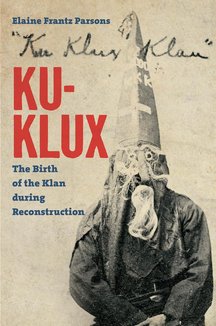Recommended Books

Braiding Sweetgrass: Indigenous Wisdom, Scientific Knowledge and the Teachings of Plants
Author:
Robin Wall Kimmerer
ISBN 13:
978-1571313560
A New York Times Bestseller A Washington Post Bestseller Named a "Best Essay Collection of the Decade" by Literary Hub As a botanist, Robin Wall Kimmerer has been trained to ask questions of nature with the tools of science. As a member of the Citizen Potawatomi Nation, she embraces the notion that plants and animals are our oldest teachers. In Braiding Sweetgrass , Kimmerer brings these two lenses of knowledge together to take us on “a journey that is every bit as mythic as it is scientific, as sacred as it is historical, as clever as it is wise” (Elizabeth Gilbert). Drawing on her life as an indigenous scientist, and as a woman, Kimmerer shows how other living beings―asters and goldenrod, strawberries and squash, salamanders, algae, and sweetgrass―offer us gifts and lessons, even if we've forgotten how to hear their voices. In reflections that range from the creation of Turtle Island to the forces that threaten its flourishing today, she circles toward a central argument: that the awakening of ecological consciousness requires the acknowledgment and celebration of our reciprocal relationship with the rest of the living world. For only when we can hear the languages of other beings will we be capable of understanding the generosity of the earth, and learn to give our own gifts in return.

Ku-Klux: The Birth of the Klan during Reconstruction
Author:
Elaine Frantz Parsons
ISBN 13:
978-1469652139
The first comprehensive examination of the nineteenth-century Ku Klux Klan since the 1970s, Ku-Klux pinpoints the group's rise with startling acuity. Historians have traced the origins of the Klan to Pulaski, Tennessee, in 1866, but the details behind the group's emergence have long remained shadowy. By parsing the earliest descriptions of the Klan, Elaine Frantz Parsons reveals that it was only as reports of the Tennessee Klan's mysterious and menacing activities began circulating in northern newspapers that whites enthusiastically formed their own Klan groups throughout the South. The spread of the Klan was thus intimately connected with the politics and mass media of the North. Shedding new light on the ideas that motivated the Klan, Parsons explores Klansmen's appropriation of images and language from northern urban forms such as minstrelsy, burlesque, and business culture. While the Klan sought to retain the prewar racial order, the figure of the Ku-Klux became a joint creation of northern popular cultural entrepreneurs and southern whites seeking, perversely and violently, to modernize the South. Innovative and packed with fresh insight, Parsons' book offers the definitive account of the rise of the Ku Klux Klan during Reconstruction.

The White Racial Frame
Author:
Joe R. Feagin
ISBN 13:
978-0367373481
In this book sociologist Joe Feagin extends the systemic racism framework in previous Routledge books by developing an innovative concept, the white racial frame. Now more than four centuries old, this white racial frame encompasses not only the stereotyping, bigotry, and racist ideology emphasized in other theories of “race,” but also the visual images, array of emotions, sounds of accented language, interlinking interpretations and narratives, and inclinations to discriminate that are central to the frame’s everyday operations. Deeply imbedded in American minds and institutions, this white racial frame has for centuries functioned as a broad worldview, one essential to the routine legitimation, scripting, and maintenance of systemic racism in the United States. Here Feagin examines how and why this white racial frame emerged in North America, how and why it has evolved socially over time, which racial groups are framed within it, how it has operated in the past and present for both white Americans and Americans of color, and how the latter have long responded with strategies of resistance that include enduring counter-frames. In this third edition, Feagin has included much new data from many recent research studies on framing issues related to white, black, Native, Latino/a, and Asian Americans, and on society generally. The book also includes a more extensive discussion of the impact of the white frame on popular culture, including on video games, movies, and television programs, as well as a discussion of the white racial frame’s significant impacts on public policymaking on immigration, the environment, health care, and crime and imprisonment issues.